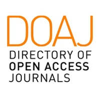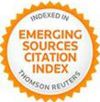Tangible and Intangible: Digital Systems and Methodological Analysis for Understanding and Accessing the Cultural Heritage of Fragile Territories 
Abstract
This research examines the town of Lama dei Peligni as an emblematic example of a fragile territory in the Abruzzo hinterland, characterized by the loss of cultural identity, yet set within an orographic context distinguished by significant landscape qualities. The study employed a scientific, multidisciplinary, and integrated methodological approach, aimed at objectively and informatively understanding the territory's historical-environmental -tangible and intangible- values. Analyses were structured within a unified system that enabled objective comparisons with the current configuration of places, facilitating the updating and iteration of various analyses by establishing a GIS-based geodatabase. The heterogeneous data collected were synthesized through the language and methodologies of graphic representation, employed as a tool for analysis and scientific cognitive mediation, to valorise and disseminate the findings, ultimately guiding informed design decisions.
Keywords
Full Text:
PDFDOI: http://dx.doi.org/10.2423/i22394303v15n1p17
References
Baratin, L., Bertozzi, S., & Moretti, E. (2015). The geomorphological transformations of the city of Urbino: The design of the city analysed with GIS tools. SCIRES-IT - IT - SCIentific RESearch and Information Technology, 5(1), 41–60. https://doi.org/10.2423/i22394303v5n1p41
Basso, A., Palestini, C., & Marzetti, F. (2022). Historic paths of Abruzzo: Shared information networks for enhancement of the cultural heritage of the Mediterranean. In M. Ricci (Ed.). MedWays. Open Atlas (pp. 749-760). Siracusa: LetteraVentidue.
Bouchenaki, M. (2003). The interdependency of the tangible and intangible cultural heritage. In Proceedings of the 14th ICOMOS General Assembly and International Symposium: Place, Memory, Meaning: Preserving Intangible Values in Monuments and Sites. Paris: ICOMOS.
Brusaporci, S. (2014). Issues of historic town surveying: Visualizing urban values. SCIRES-IT - IT - SCIentific RESearch and Information Technology, 4(2), 63–80. https://doi.org/10.2423/i22394303v4n2p63
Burri, E., & Latini, M. L. (2002). Parco Nazionale della Majella, la montagna dei lupi, degli orsi e dei santi eremiti. Pescara: Carsa Edizioni.
Caffio, G. (2022). Atlante dei borghi solitari d’Abruzzo. Siracusa: LetteraVentidue. Campanelli, A. (2010). La montagna di Celestino “Maiella Madre”. Milano: Mac.
Colanzi, M., & Rossetti, A. (2014). Memorie d’acqua. I Mulini nella valle del Sangro-Aventino. Ortona: Menabò.
Continenza, R., & Trizio, I. (2012). Tra strumenti classici e geodatabase 3D: il piano di ricostruzione post sisma 2009 del centro storico di Bugnara (AQ). SCIRES-IT - IT - SCIentific RESearch and Information Technology, 2(2), 29-40. https://doi.org/10.2423/i22394303v2n2p29
De Nino, A. (1891). Lama de' Peligni: antichità rinvenute in vari luoghi del comune : notizie degli scavi : settembre / 15 ott. 1891. Atti della R. Accademia dei Lincei. Memorie della Classe di scienze morali, storiche e filologiche, ser. 4, 9, 1891.
Geniola, A. (1989-1990). Fonterossi (Lama dei Peligni, Prov. di Chieti). Rivista di scienze preistoriche, XLII(1-2), 380-381.
Istituto Superiore per la Protezione e la Ricerca Ambientale (2005). Inventario dei fenomeni franosi in Italia. Retrieved from: https://idrogeo.isprambiente.it
Knowles, A. K. (2008). GIS and history. In A. K. Knowles (Ed.), Placing history: How maps, spatial data, and GIS are changing historical scholarship (pp. 1–25). Redlands, CA: ESRI Press.
Lembo, R., Leserri, M., Pasuy Arciniegas, W., & Rossi, G. (2024). Surveying of a Cultural Landscape Through Documentation of its Tangible and Intangible Component: the Sanctuary of Las Lajas. SCIRES-IT - SCIentific RESearch and Information Technology, 14(1), 187-202. http://dx.doi.org/10.2423/i22394303v14n1p187
Leserri, M., & Rossi, G. (2023). The Digital Documentation of the Cultural Heritage Between Public Interest Versus Private Property. Survey and Research on the Immacolata Square in Martina Franca (Apulia, Italy). SCIRES-IT - SCIentific RESearch and Information Technology, 13(2), 27-42. http://dx.doi.org/10.2423/i22394303v13n2p27
Manzi, G., & Macchiarelli, R. (1989). L’Uomo “pre-neolitico” della Maiella (Lama dei Peligni, Abruzzo.) Datazione radiometrica dello scheletro. Rivista di Antropologia, 67, 325-328.
Meletti, C., Montaldo, V., Stucchi, M., & Martinelli, F. (2006). Database della pericolosità sismica MPS04. Istituto Nazionale di Geofisica e Vulcanologia (INGV). https://doi.org/10.13127/sh/mps04/db
Ministero dell'Ambiente e della Sicurezza Energetica (2024). SIC, ZSC e ZPS in Italia. Retrieved from https://www.mase.gov.it/portale/web/guest/sic-zsc-e-zps-in-italia
Notarbartolo, E. (1842). Descrizione della strada o dei trafori sul Monte Majella, nella Provincia di Abruzzo Citra, descritta dall’Intendente Marchese di S. Giovanni Sciara, ed eseguita sotto la sua amministrazione. Annali civili del Regno delle due Sicilie, 29, 114-117.
Palestini, C. (2004). Le vie degli Abruzzi. Percorsi iconografici: letture e prospettive di contesti ambientali. In C. Gambardella & S. Martusciello (Eds.), Le Vie dei Mercanti. Da Luca Pacioli all'ecogeometria del territorio. Atti del primo forum internazionale di studi, Capri 6-7 giugno 2003 (pp. 561–573). Napoli: Edizioni Scientifiche Italiane.
Palestini, C. (2012). Paesaggi culturali: Materialità e spiritualità nelle montagne d’Abruzzo. In
C. Gambardella (Ed.), Less More. Architecture Design Landscape. Le vie dei Mercanti – X Forum Internazionale di Studi (pp. 1288–1294). Napoli: La Scuola di Pitagora.
Palestini, C. (2017). Exploring the landscape through drawings, with historic routes and contemporary directions. In G. Amoruso (Ed.), Putting tradition into practice: Heritage, place and design. INTBAU 2017. Lecture Notes in Civil Engineering (Vol. 3, pp. 928–937). Springer, Cham. https://doi.org/10.1007/978-3-319-57937-5_95
Palestini, C. (2018). Time-line/Linee di lettura materiali e immateriali nella trasformazione della città. In
R. Salerno (Ed.), UID 2018 – Rappresentazione materiale/immateriale – Drawing as (in) tangible. Atti del 40° Convegno internazionale dei Docenti delle discipline della Rappresentazione / Proceedings of the 40th International Conference of Teachers of the Disciplines of the Representation (pp. 727–734). Roma: Gangemi.
Pezzetta, A. (1994). Casa rurale, ambiente, agricoltura e società a Lama dei Peligni dal 1700 ai giorni nostri, Monfalcone: Savorgnan.
Pirinu, A., Mocci, S., & Sanna, G. (2024). Digital tools for the knowledge, preservation, and enhancement of 20th-century military heritage: A case study from Sardinia. SCIRES-IT - IT - SCIentific RESearch and Information Technology, 14(2), 63–78. https://doi.org/10.2423/i22394303v14n2p63
Pratesi, F. (1996). Abruzzo. Una natura da scoprire. Pescara: Carsa Edizioni.
Presidenza del Consiglio dei Ministri, Dipartimento della Protezione Civile (2024). Classificazione sismica aggiornata al 31 agosto 2024. Retrieved from https://rischi.protezionecivile.gov.it/it/sismico/attivita/classificazione-sismica/
Regione Abruzzo (2007). Database topografico regionale (DBTR), scale 1:5.000, 1:10.000, and 1:25.000 –
Edizione 2007. Retrieved from http://opendata.regione.abruzzo.it
Regione Abruzzo (2015). Modello digitale del terreno, risoluzione 10 × 10 m. Retrieved from http://opendata.regione.abruzzo.it/opendata/Modello_digitale_del_terreno_risoluzione_10x10_metri
Regione Abruzzo (2018). Sistema delle Conoscenze Condivise. Retrieved from http://opendata.regione.abruzzo.it/tema/sistema-conoscenze-condivise-0
Rellini, U. (1914). L’età della pietra sulla Maiella. Bullettino di Paletnologia Italiana, ser. 4, vol. 10, 30-42, 95-100.
Renzoni, C., & Eramo, E. (2020). Il rilievo della memoria/The survey of memory. In A. Arena, M. Arena, R.G. Brandolino, D. Colistra, G. Ginex, D. Mediati, S. Nucifora, & P. Raffa (Eds.). Connettere. Un disegno per annodare e tessere. Atti del 42° Convegno Internazionale dei Docenti delle Discipline della Rappresentazione/Connecting. Drawing for weaving relationships. Proceedings of the 42th International Conference of Representation Disciplines Teachers (pp. 2640-2661). Milano: FrancoAngeli.
Ridolfi, N. (2005). Economia di una catastrofe: il terremoto della Majella in epoca fascista. Milano: FrancoAngeli.
Rossi, M. (2018). Learning from the past: Water heritage. Landscape patterns around Parma. In G. Amoruso (Ed.). Putting tradition into practice: Heritage, place and design. INTBAU 2017. Lecture Notes in Civil Engineering (Vol. 3, pp. 1001–1010). Cham: Springer. https://doi.org/10.1007/978-3-319-57937-5_103
Salerno, R. (Ed.). (2018). UID 2018 – Rappresentazione materiale/immateriale – Drawing as (in) tangible. Atti del 40° Convegno internazionale dei Docenti delle discipline della Rappresentazione / Proceedings of the 40th International Conference of Teachers of the Disciplines of the Representation. Roma: Gangemi.
Sicignano, C. (2018). Memories of Stone Among the Water Ways: The Mills Valley in Gragnano, Naples. In: Amoruso, G. (eds). Putting Tradition into Practice: Heritage, Place and Design. INTBAU 2017. Lecture Notes in Civil Engineering, vol 3. Cham: Springer. https://doi.org/10.1007/978-3-319-57937-5_106
Tarquini, S., Isola, I., Favalli, M., Battistini, A., & Dotta, G. (2023). TINITALY, a digital elevation model of Italy with a 10 meters cell size (Version 1.1). Istituto Nazionale di Geofisica e Vulcanologia (INGV). https://doi.org/10.13127/tinitaly/1.1
Article Metrics
Metrics powered by PLOS ALM
Refbacks
- There are currently no refbacks.
Copyright (c) 2025 Caterina Palestini, Stella Lolli, Elena Eramo

This work is licensed under a Creative Commons Attribution-NonCommercial-NoDerivatives 4.0 International License.
SCIRES-IT, e-ISSN 2239-4303
Journal founded by Virginia Valzano





